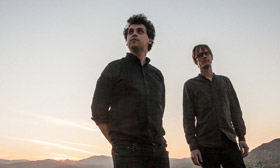
Any day a new dinosaur is announced is a good day, and, to me, yesterday was especially joyous. For years I have been hearing rumours of a gigantic sauropod – think tiny head, long neck, bulky body and tapering tail – excavated from the southernmost reaches of Argentina by Drexel University paleontologist Kenneth Lacorvara and his team. Now that dinosaur has finally walked out into the spotlight. At 26 meters long and weighing 60 tons, Dreadnoughtus schrani is an amazing testament to the wonders of evolution.
Admittedly, my love of dinosaurs is a little more intense than is typical. I anticipate the announcement of new dinosaurs with the same fervour as Sherlock devotees awaiting the start of the next series. But some level of fossil fandom is incredibly common. Dinomania is so powerful that it has become a cultural institution.
We first meet Tyrannosaurus and Diplodocus as children, their bones inspiring dreams, nightmares, and some of our earliest connections to science. The “Brontosaurus” – a name sadly discarded – gave me my start. And even after we stop making Triceratops and Stegosaurus battle each other in the schoolyard sandbox, we still love our dinosaurs. The pop-cultural success of the irradiated pseudo-dinosaur Godzilla, and the impending release of the film Jurassic World next summer are confirmation that dinosaurs aren’t just kids’ stuff.
But why dinomania? Why not fossil mammal fandom or a craze for critters from the Cambrian period? The standard pop-psychology answer is that dinosaurs are big, fierce and extinct. This makes them suitably impressive, but safe to approach. There’s no risk of Allosaurus snaffling up kids who lean over the barriers at the Natural History Museum.
I’ve never been satisfied by this answer. For one thing, there are scores of other prehistoric beasties that fit the description of “big, fierce and extinct” that aren’t nearly as popular as dinosaurs. Andrewsarchus – a big, prehistoric mammalian carnivore that resembled the villainous Gmork from The Neverending Story – is not a household name despite its apparent ferocity, and the shovel-tusked elephants and bear dogs of the age of mammals have not inspired a “Miocene Park” film franchise. To get to the bottom of why dinosaurs grip our imagination so tenaciously, we need to dig deeper. Fieldwork gives me the chance to do just that.
Last week I spent a few sun-beaten days on a sandstone ledge 250 feet above the sagebrush-flecked floor of an eastern Utah valley. I was there as part of an expedition to recover additional bones from the first dinosaur named from the state – a 160-million-year-old sauropod named Dystrophaeus. The quarry had sat idle for 155 years, and I could see why. Every day the team had to rig up ropes to scale a steep rock bluff and then hike all the necessary tools, water and plaster up the rest of the ridge. All this in the hope that there might be something more in the rock.
The long climb up and the hot days scratching away in the quarry gave me plenty of time to think about what compelled me to go to the precarious site. I can’t claim to have the answer for all but, for me, it is the mystery of the dinosaurs that draws me to them. The Jurassic bones I uncovered at the Dystrophaeus quarry, as well as those on display in museums all over the world, are the biological vestiges of creatures unlike just about anything alive today.
True, birds are living dinosaurs and a glorious collection of fossils makes this feathered revolution abundantly clear, but a chickadee is no stand-in for a Dreadnoughtus. And when we look at the bones of the extinct, non-avian dinosaurs that haunt our imagination, we’re faced with a seemingly infinite number of questions about how they lived. What did they eat? How fast could they move? What did they sound like? What colour were they? It’s impossible for me to look at a dinosaur, reconstructed or in the raw, and not wonder about the life of that animal, and I believe that this basic sense of wonder about the lives of the bizarre and the extinct accounts for dinosaurs’ powerful allure.
There is an even deeper dinosaurian connection, though. Whether it’s noting the time a specific dinosaur lived, or comparing their size to a double-decker bus – the popular standard for dinosaurian measurement – we’re constantly considering dinosaurs in relation to ourselves and the world we know. Dinosaurs embody the drastic changes that life on Earth has undergone, and give us access to some of the most powerful truths our species has come to understand – that our planet has an incredibly deep history, that life has changed constantly through time, and that extinction is the fate of all.
Chasing after dinosaurs is really a quest to fill in part of our own backstory, not least of all because our own fuzzy, shrew-like ancestors scurried under their feet for over 160 million years. Dinosaurs can be Hollywood monsters, objects of scientific fascination and everything in between, but at the root of it, our fascination with them stems from wanting to know more about the prehistory we share. The dinosaur story is part of our own.













Comment from the paper
Steve Bell on RBS – cartoon
John Harris: It’s not just Scotland where politics as usual is finished
Gaby Hinsliff: Fat-shaming: how the slim and sanctimonious help to cause our obesity crisis